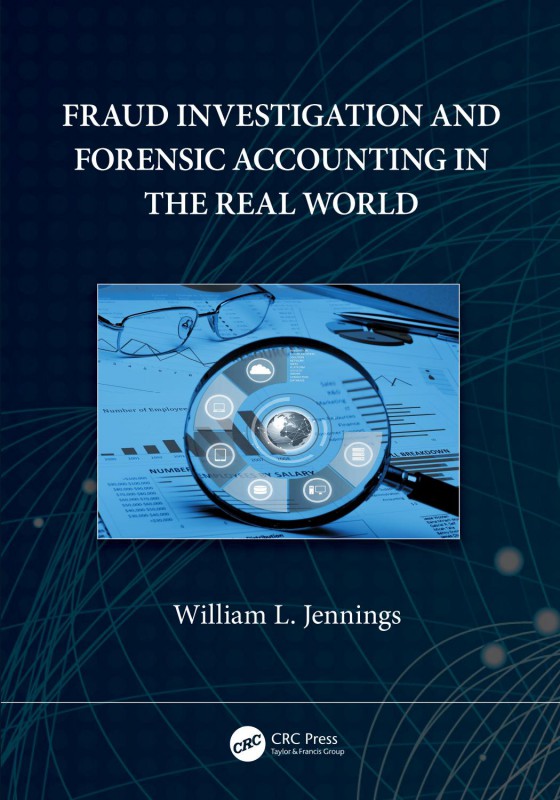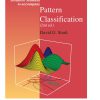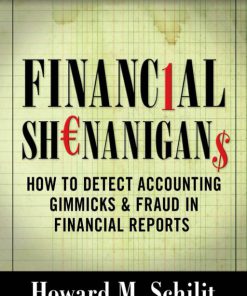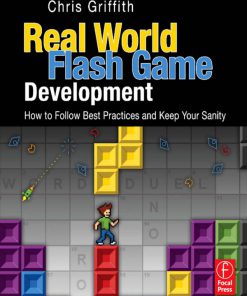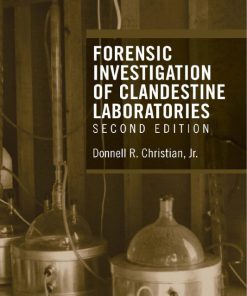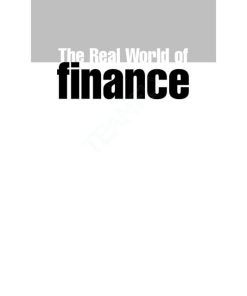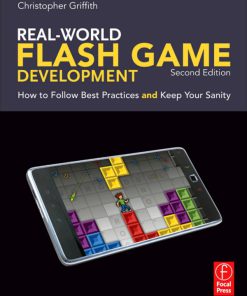(Ebook PDF) Fraud Investigation and Forensic Accounting in the Real World 1st edition by William Jennings 1000568458 9781000568455 full chapters
$50.00 Original price was: $50.00.$25.00Current price is: $25.00.
Authors:William L. Jennings , Series:Forensic [35] , Author sort:Jennings, William L. , Ids:DOI , Published:Published:Apr 2022 , Publisher:CRC Press , Comments:Comments:This book will cover every aspect of forensic accounting, anti-fraud control systems and fraud investigation. The author uses his own case experience to guide those who are engaged in fraud investigation and forensic accounting step by step through each phase of a forensic accounting assignment and fraud investigation.
Fraud Investigation and Forensic Accounting in the Real World 1st edition by William L. Jennings – Ebook PDF Instant Download/DeliveryISBN: 1000568458, 9781000568455
Full download Fraud Investigation and Forensic Accounting in the Real World 1st edition after payment.
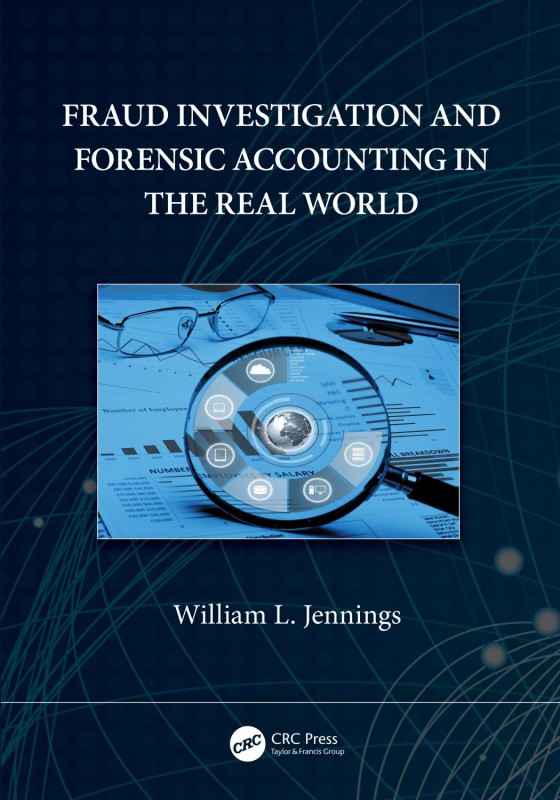
Product details:
ISBN-10 : 1000568458
ISBN-13 : 9781000568455
Author : William L. Jennings
This book covers every aspect of forensic accounting, anti-fraud control systems, and fraud investigations. The author uses his own case experience to guide the reader through each phase of a forensic accounting assignment and fraud investigation. The book opens with an explanation of what happened to a company that was ensnared in a huge commodity purchasing scheme. Using his knowledge and experience gained over 40 years, the author illustrates that unexpected fraud occurrences can happen to any company, in any industry. Additionally, the author explains the current white-collar crime threats that organizations face every day, as well as legal issues that are often implicated in forensic accounting and fraud investigation projects.
Fraud Investigation and Forensic Accounting in the Real World 1st Table of contents:
Part I Fraud in the Real World
Chapter 1 What Are You Up Against? A Bigger Problem than Most People Realize!
Section I: Invisible Criminals
The Invisible Criminal
The Fraud Function
Section II: Crimes
Section III: The Impact of Crime on Your Organization
Summary
Exercises
Chapter Summary/Key Takeaways
Notes
Chapter 2 An Ounce of Prevention
Section I: How to Identify, Codify, and Prioritize Risks
Pulling It All Together
Section II: How to Gather and Evaluate Critical Data to Create an Early Warning Fraud Detection System
Benchmark from External
Dashboard
Exercises
Chapter Summary/Key Takeaways
Notes
Part II Forensic Accounting Investigations
Chapter 3 The Ounce of Prevention Didn’t Work; Now What?
Section I: The Things You Should and Should Not Do When You Learn of Possible Irregularity or Crime
Section II: How to Make Sure You Do Not Become One of the Victims of the Crime (i.e. Internal Auditors Are Often Punished for Not Reacting Correctly to a Suspected Crime)
Section III: Creating an Effective Investigation and Resolution Strategy (The Key Is to Begin with the End in Mind)
Exercises
Chapter Summary/Key Takeaways
Chapter 4 Conducting an Effective Preliminary Investigation
Section I: Is It More Likely than Not That Something Happened?
Section II: What Is the Actual Problem and How Will We Resolve It?
Section III: Determining Whether Other Related Problems Exist
Exercises
Chapter Summary/Key Takeaways
Notes
Chapter 5 Beginning the Investigation
Section I: Putting the Investigation Team Together
Section II: Dividing Responsibilities
Section III: Getting the Team Appropriate Access
Exercises
Chapter Summary/Key Takeaways
Chapter 6 Legal Issues
Section I: Working with Lawyers
Section II: Laws and Rules Related to Accessing Third Party Information
What about the EU?
What is Personal Data under GDPR?
What about the Banks?
Section III: Laws and Rules Related to Accessing Documents
Section IV: Laws and Rules Related to Accessing Witnesses
Exercises
Chapter Summary/Key Takeaways
Notes
Chapter 7 Gathering Information and Evidence
Section I: Preventing the Intentional or, More Often, Unintentional Destruction of Evidence
Section II: The Best Evidence Rule and How to Select Which Evidence to Gather
Section III: Properly Preserving and Collecting Electronic Evidence
Section IV: Properly Preserving and Collecting Non-Electronic Evidence
Exercises
Chapter Summary/Key Takeaways
Notes
Chapter 8 Interviewing Witnesses
Section I: The Science and Art of Conducting Witness Interviews
What Science Tells Us about Witness Interviews
What the Law Tells Us about Witness Interviews
The Art of Witness Interviews
How I Conduct Witness Interviews
Section II: Preparation for the Interview
Section III: Conducting the Interview
Section IV: Memorializing the Interview
Section V: Writing the Interview Report
Exercises
Chapter Summary/Key Takeaways
Notes
Chapter 9 Conducting a Forensic Analysis of the Evidence
Section I: Framing the Questions That Must Be Answered with the Evidence
Section II: Creating a Forensic Analysis Workplan
Section III: Creating Effective Work Paper Systems to Support Findings and Conclusions
Section IV: Analytical Tools Commonly Used in Fraud Investigation
Section V: Using Data Science in Fraud Investigation and Forensic Accounting
Exercises
Chapter Summary/Key Takeaways
Notes
Chapter 10 Documenting Findings, Forming Conclusions, and Writing the Investigation Report
Section I: Types of Reports
Section II: What the Investigation Report Must Accomplish
Section III: The Elements of a Good Investigation Report
Section IV: Fact and Computation Checking
Exercises
Chapter Summary/Key Takeaways
Note
Chapter 11 Quantification of Economic Damages
Section I: Game Theory and Settlement
Section II: Determining the Proper Measure of Economic Damages
Section III: Proper Techniques for Measuring Economic Damages
Section IV: Business Valuation Techniques Used in Measuring Economic Damages
Why Issued
Example: Economic Damages
Example: Valuation Report
Exercises
Chapter Summary/Key Takeaways
Notes
Chapter 12 Presenting Findings and Conclusions Internally
Section I: To Management
Section II: To Audit or Other Board Committees
Exercises
Chapter Summary/Key Takeaways
Chapter 13 Presenting Findings and Conclusions to Law Enforcement
Section I: Factors to Consider in Deciding to Go to Law Enforcement
Section II: Sharing Findings, Conclusions, and Evidence with Law Enforcement
Exercises
Chapter Summary/Key Takeaways
Notes
Chapter 14 Presenting Evidence at Trial
Section I: The Judicial Process Generally
Facts and Data Considered by the Witness
Exhibits Used to Summarize Facts or Data
Section II: Fact Witness Testimony
Section III: Expert Witness Testimony
Section IV: Rules of Civil Procedure Generally
Section V: The Chess Game
People also search for Fraud Investigation and Forensic Accounting in the Real World 1st:
computer forensics jumpstart
cryptanalyst-forensic examiner
computer forensics criminal justice
forensic analysis report example
forensic analysis techniques

